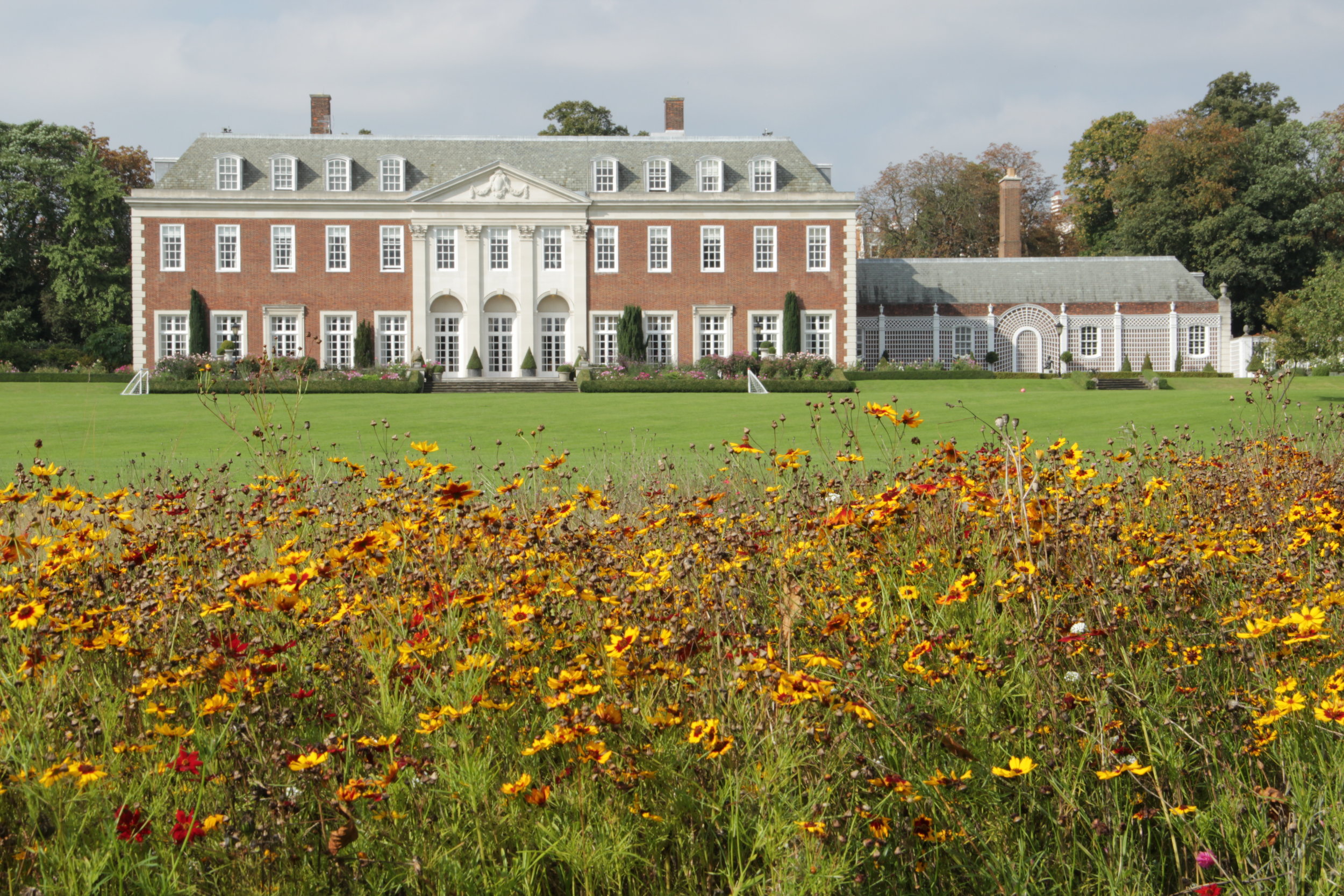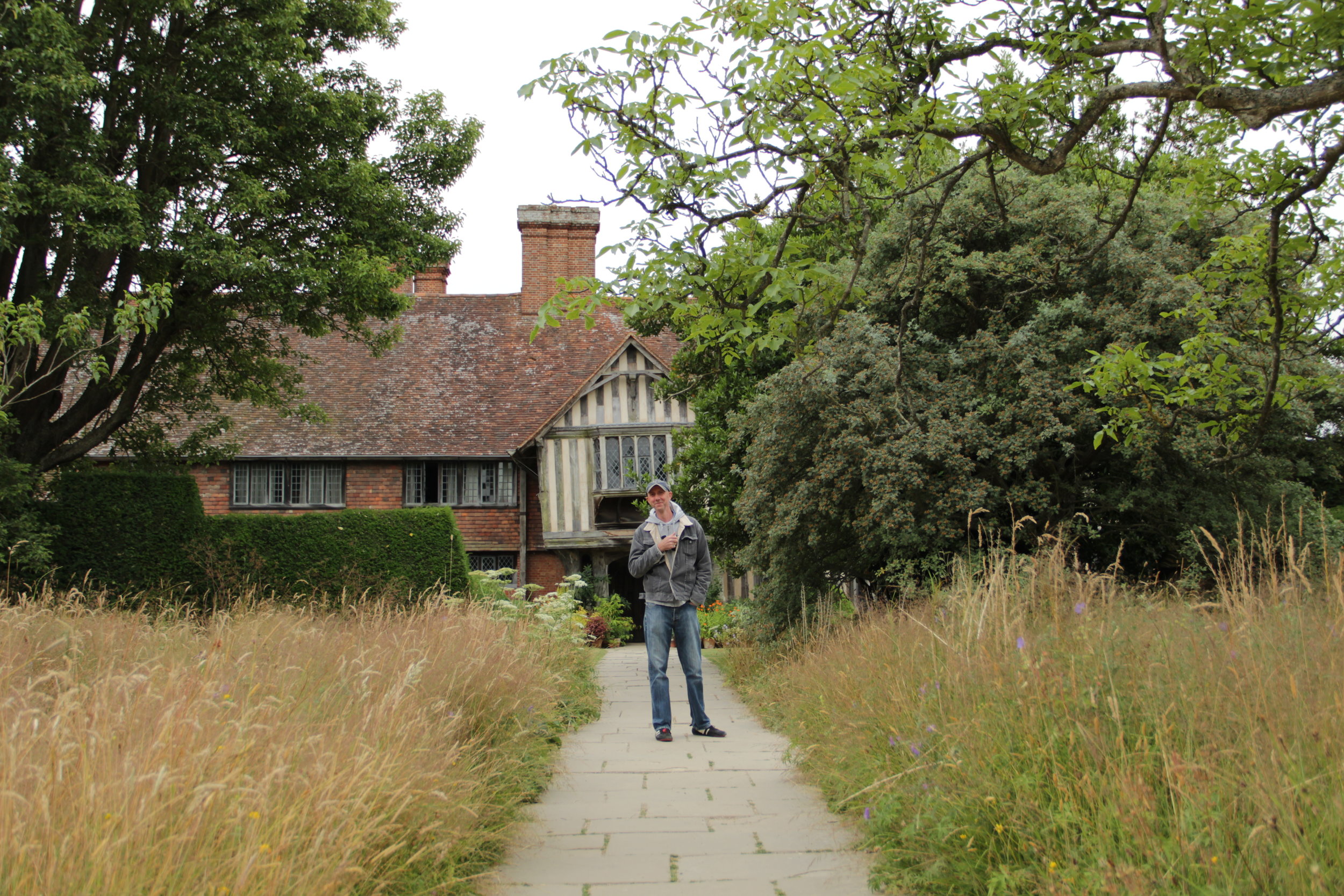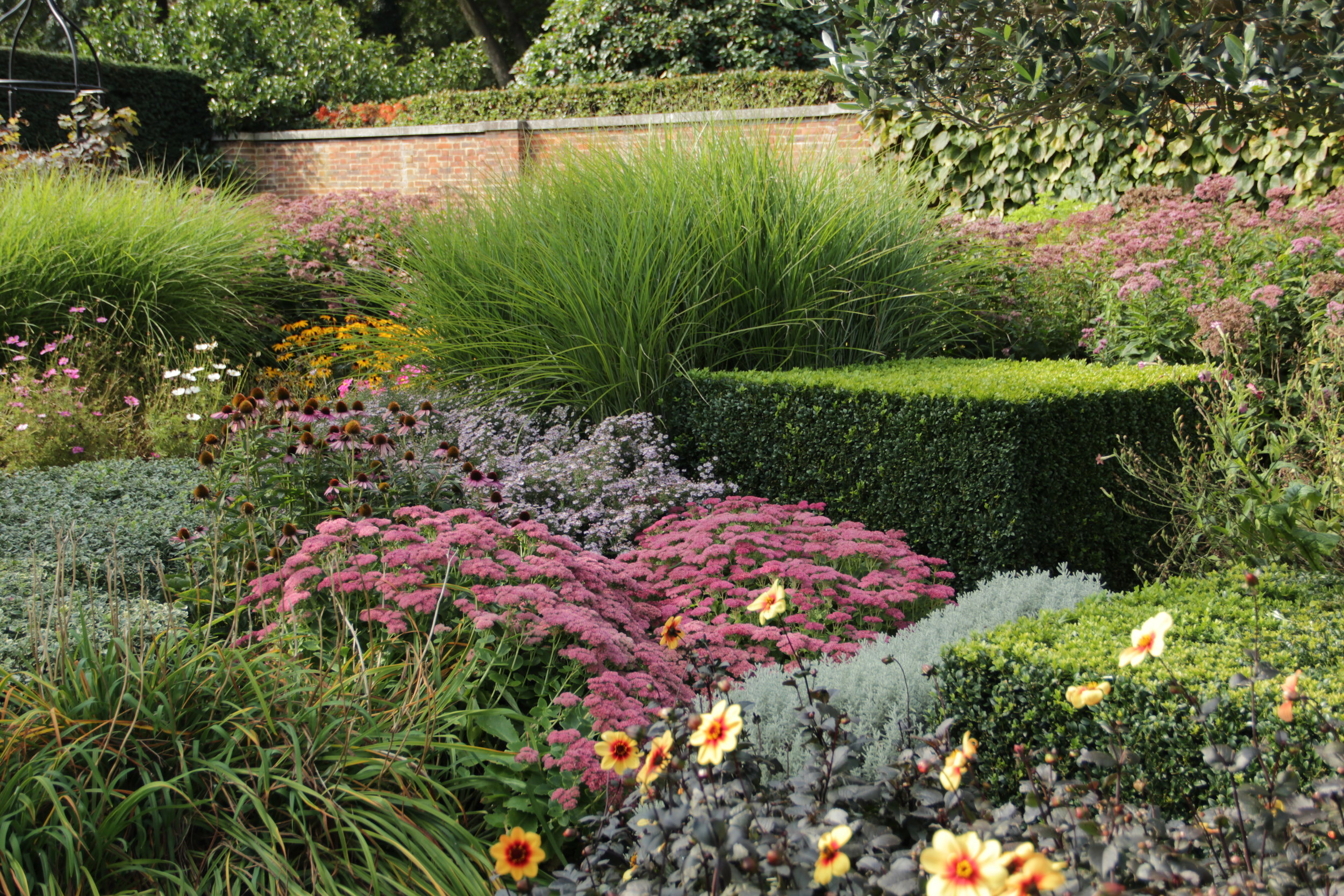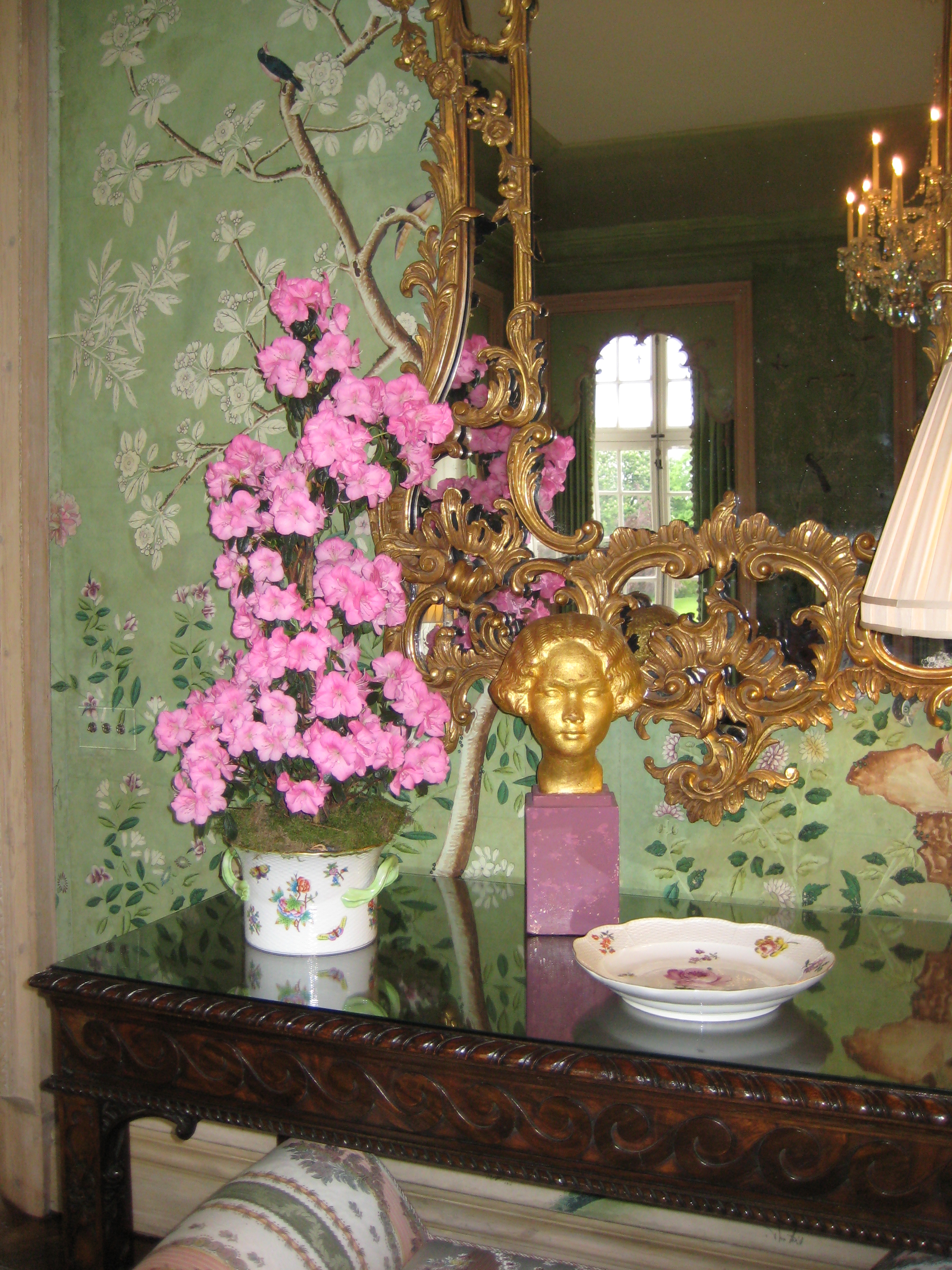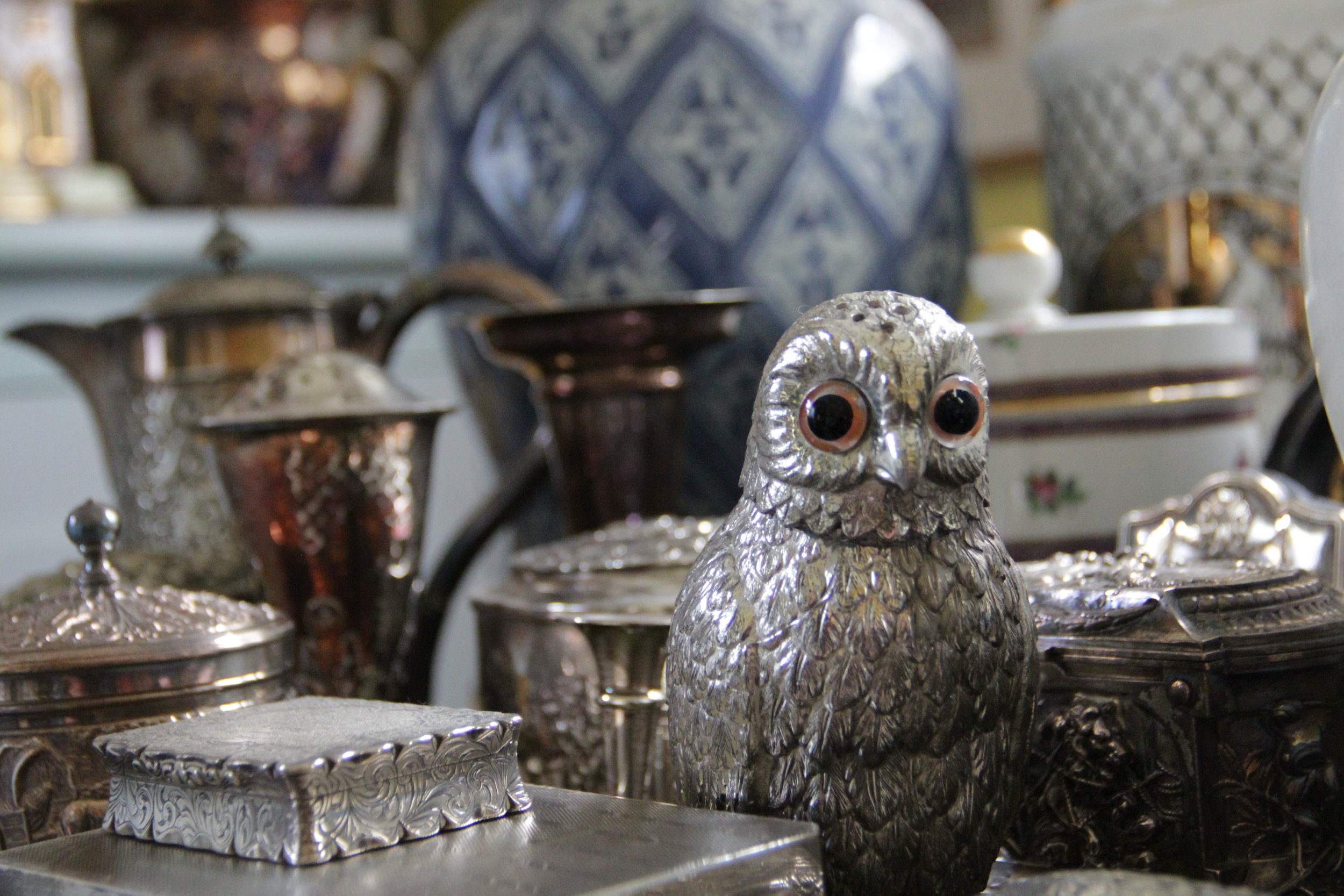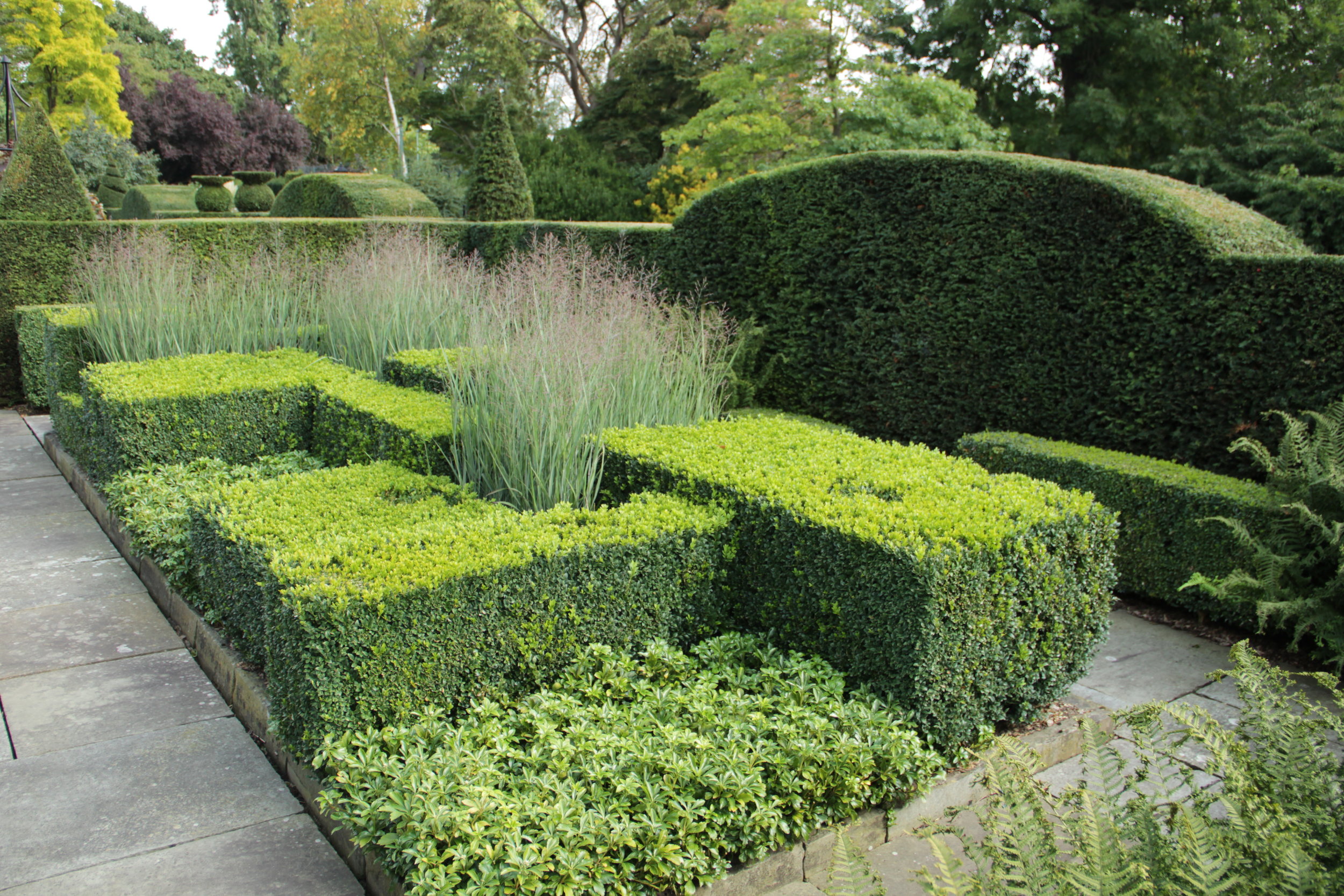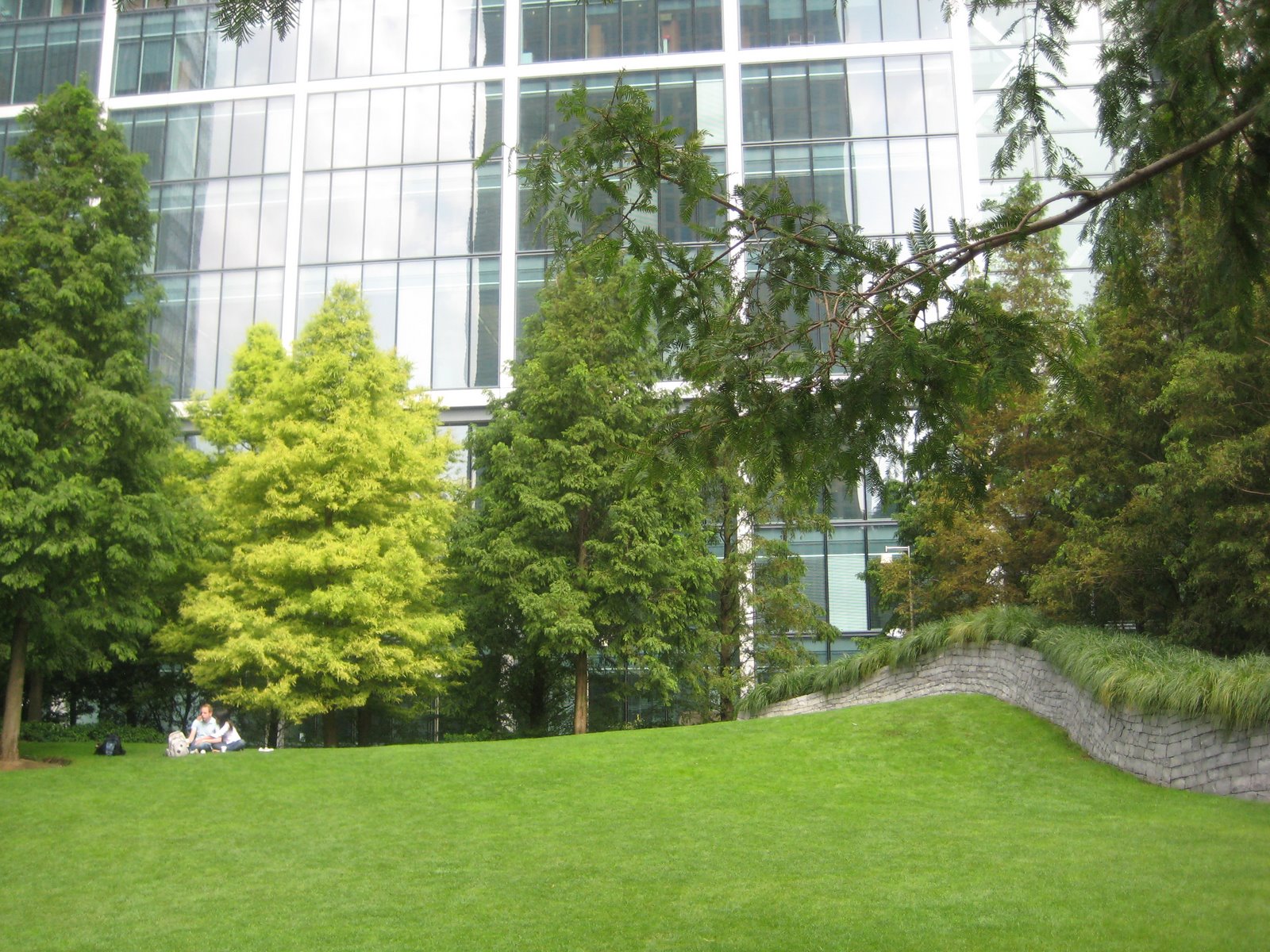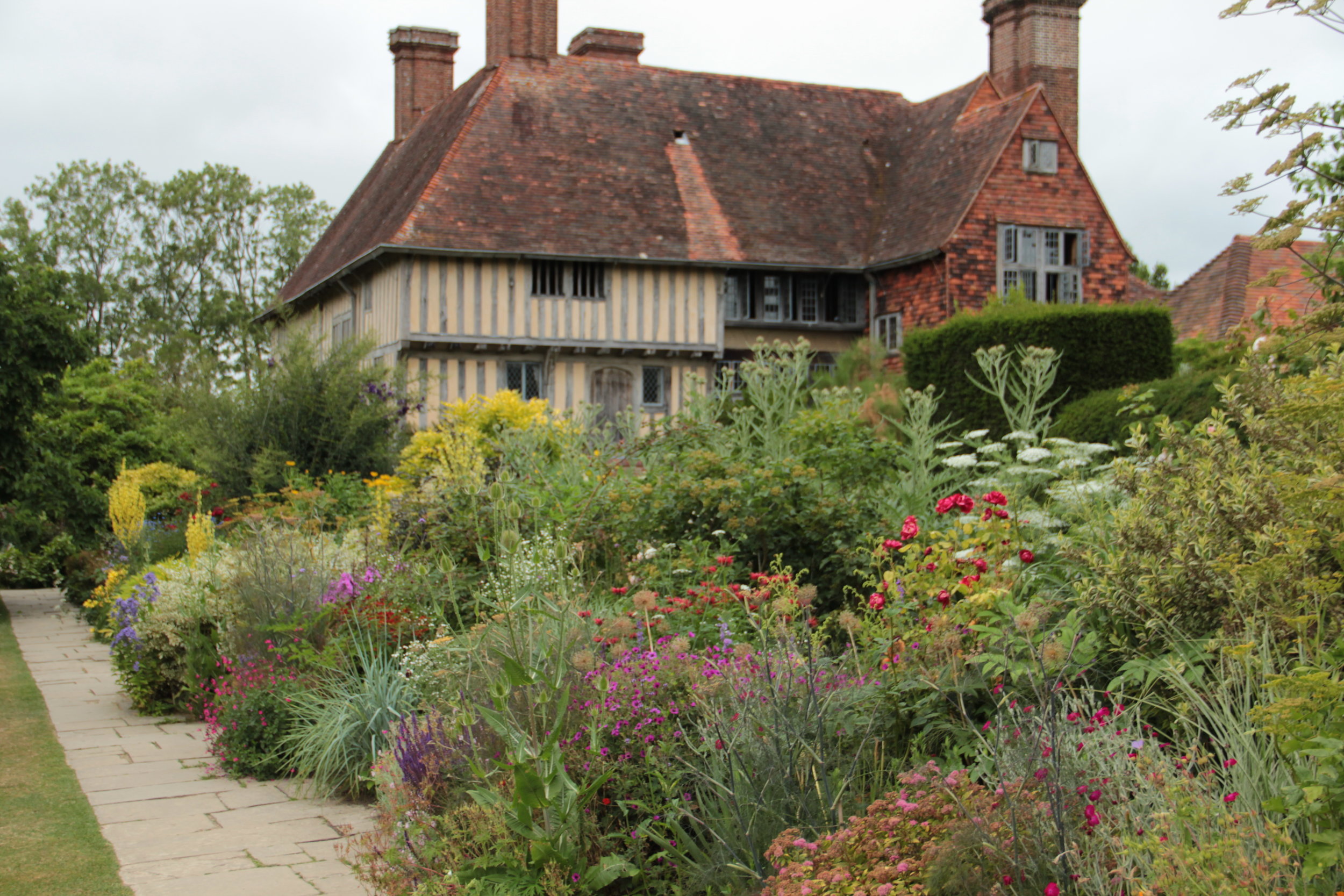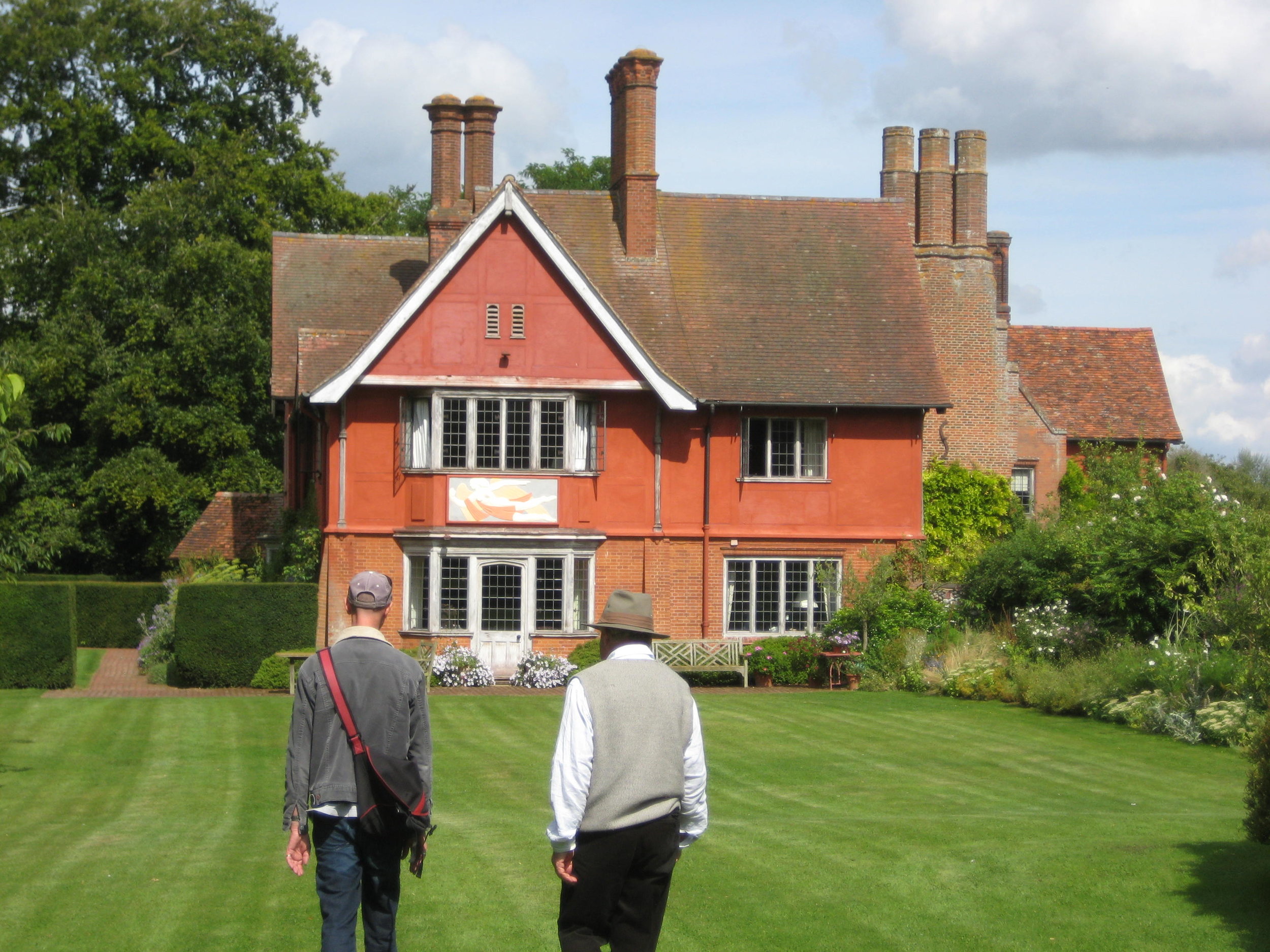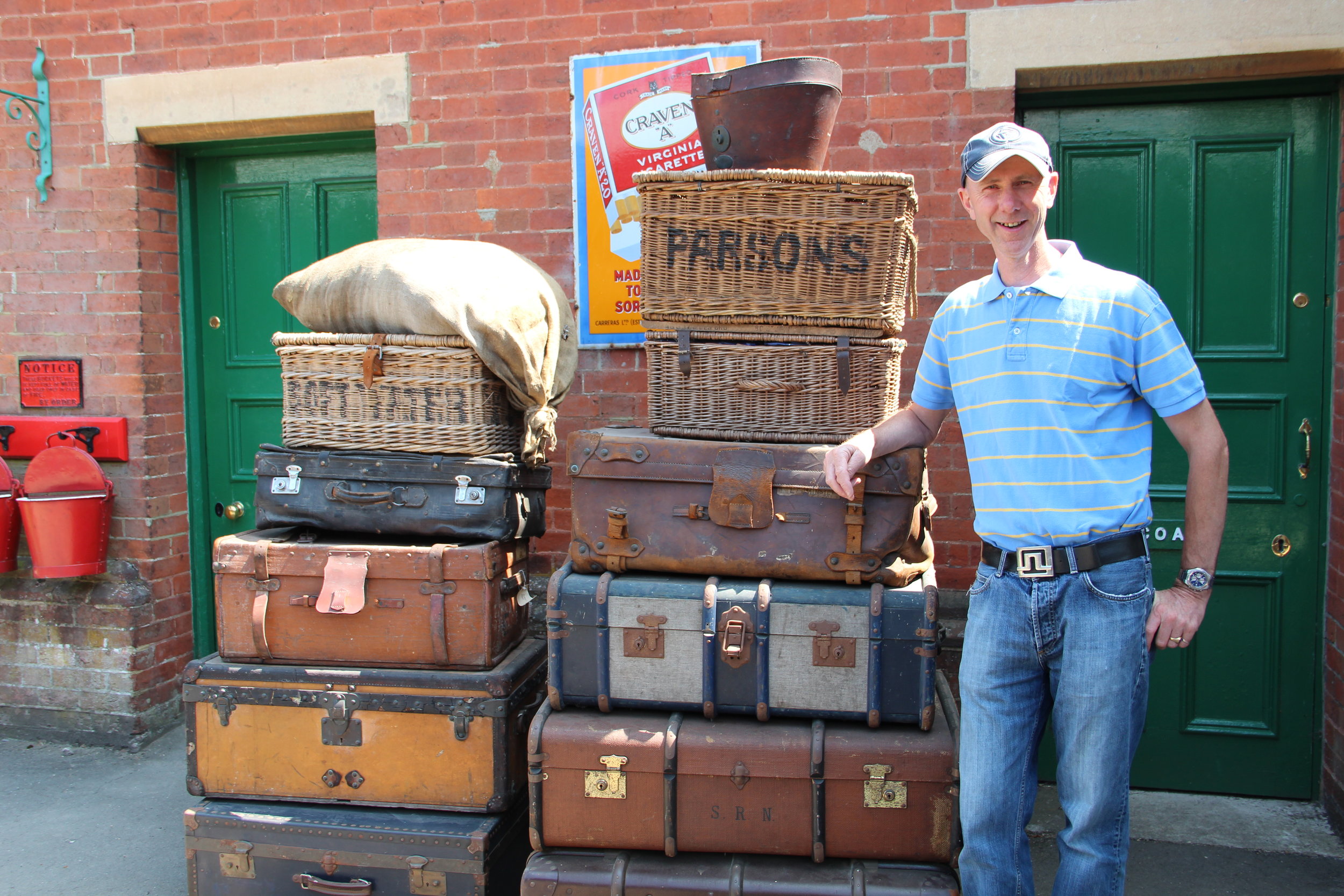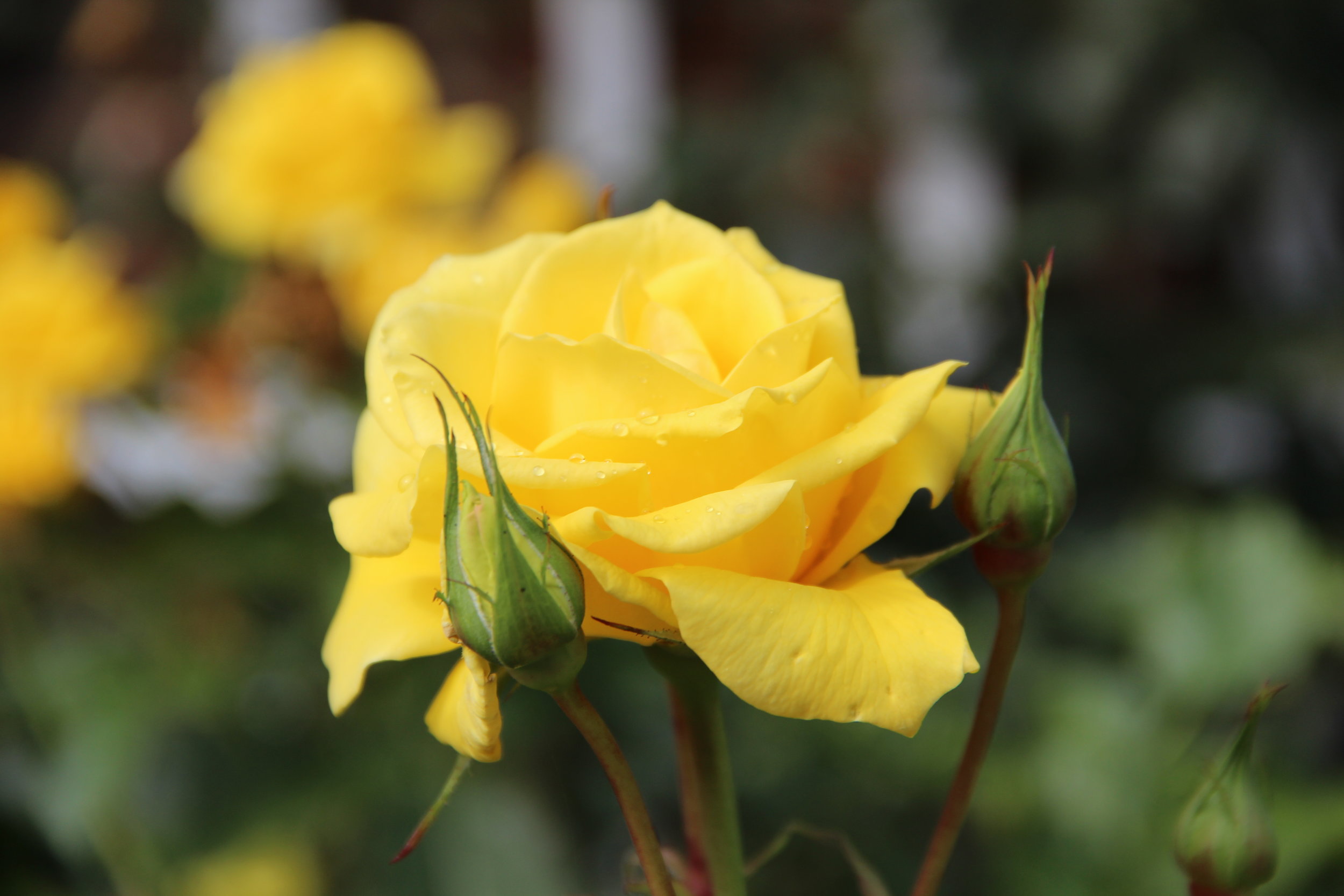5-10-5 Stephen Crisp at Winfield House
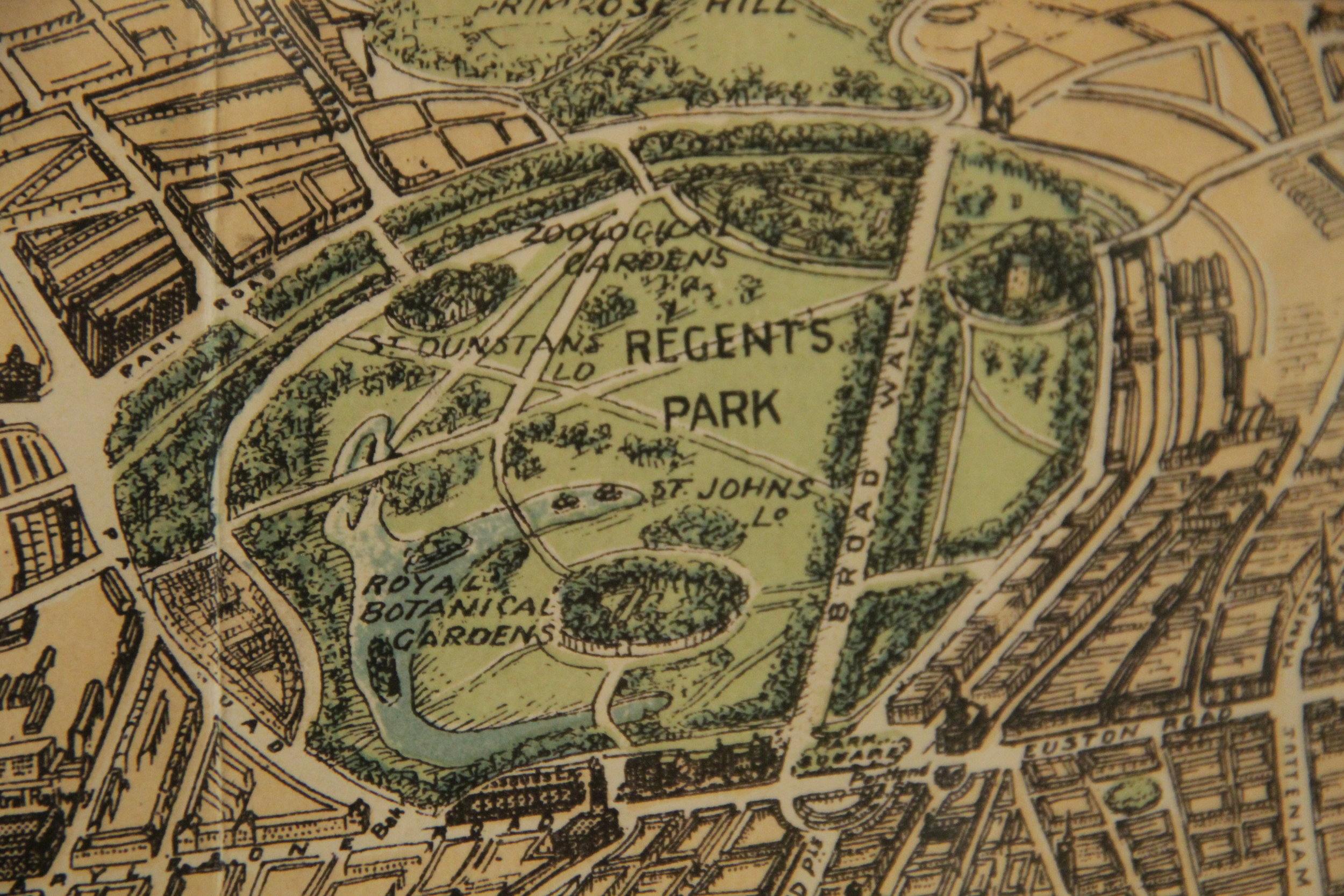 Hello and can you introduce yourself?
Hello and can you introduce yourself?
Hello my name is Stephen Crisp, and I am the Head Gardener at Winfield House in Regent's Park, London.
The Arts or Horticulture, which do you feel most associated with?
Probably horticulture, though with an artistic acknowledgement because I see horticulture and gardening as being an art form, but I guess if I had to tick one box it would probably be horticulture.
For those that might not know you, can you please tell us a bit about yourself and your background?
I have been at Winfield House since 1987, in the role of Head Gardener. Prior to that I was at Leeds Castle, as horticulturist for the Leeds Castle Foundation, establishing some new gardens there and working with Russell Page, who was the landscape consultant there in the 1980’s. Training and scholarships to Tresco Abbey and Longwood Gardens in the U.S. Also, The Royal Horticultural Society which was a two-year program back at Wisley in 1979 through 1981 and was the first formal education I had in horticulture.
Gardening usually gets into our system at an early age, do you remember your first gardening memory?
My first gardening memory was my grandparents’ garden. I grew up living next door to them and my grandfather used to grow chrysanthemums in part of the garden, those big funny lollipop things. They looked like big balls on sticks, which I was intrigued by but couldn’t understand what the attraction was. They seemed strange to me because chrysanthemums don’t naturally grow like that but he never exhibited them at flower shows though I don’t know why. That was my first conscious awareness of gardening as some sort of recreation or vocation rather than people just growing green stuff growing in an open space. The other memory that registered with me as a child was one of my Aunts, who had a tiny garden at the rear of her house, in Winchester, that she lived in. She was always very proud of it with her pocket-handkerchief lawn and a little pool made of concrete with a gnome cemented to the edge of it. There were some geraniums and roses there as well, it was very proper and somehow that always resonated with me too.
Do you remember the first piece of art or a color you were captivated by?
The color is BLUE, always blues! Art was probably William Morris as his museum collection was half a mile away from my child hood home and I spent a lot of time with my face pressed to the glass of cabinets or stroking pieces of furniture when the custodian was not looking!
Who, if anyone, would you consider your mentor?
I was asked this question recently and while there wasn’t a specific person, different people have and continue to pass within my orbit and me within theirs. In effect, they become mentors in a passive way, in an inspirational way rather than someone who every time I have a question about horticulture I think I must ask ‘so and so’. It’s more about influences and people making you aware in thinking something you haven’t thought before. There have been certain people who have been generous and pivotal in where I have ended up; probably most significant is Peter Coats. He introduced me to Winfield, as a result of doing an interview with him about a garden that I made at Leeds Castle and he put forward my name to work here (Winfield House). Rosemary Verey was always very generous, as well, and we would often meet or correspond and when I wanted to go to America, she wrote some letters of introduction for me.
Christopher Lloyd partly through looking to him for inspiration rather than entering into frequent dialogue with him because when I was a student I found him an inspirational writer. Visiting Great Dixter was a revelation for me, not so much the first few times I went there, but once Fergus came on board, there was a whole new energy that entered the place, that to me made it, and continues to make it, an inspirational place. Even though Christopher Lloyd is not there now, his spirit is still part of the mentoring process; so, I think its people rather than a person.
How did you come to be the Head Gardener at Winfield House?
It was through Peter Coats, then acting editor at House and Garden Magazine, and I met him about 3 years before I came here, in the mid 80’s. He came to write a story about a garden that I had made at Leeds Castle in partnership with Russell Page. Russell was responsible for the ground plan, the path system and the way the space was subdivided, and I did the planting design. Russell used to come along, waving his arms around, not being very specific which led me to just get on with it. Peter Coats came and wrote a story for House and Garden Magazine and we stayed in touch. Occasionally I had lunch with him and he used to live in the Albany, a complex of apartments in Piccadilly, and it was always a bit of a trial because although I would enjoy having lunch with him, the food reminded me of school dinners. These meals were served in a freezing cold dining room, because he was too mean to put the heating on, served by Briggs, his manservant. I think they disliked each other but both relied on the other for their existence, so it was a surreal experience. Peter wrote a book called ‘Gardens Around the World’ and one of the chapters was about Giverny. He didn’t have any images of the water lilies, which I did, and I lent them to him to publish in the book. Consequentially, it seemed to take our friendship onto another level.
When I was thinking about moving on from Leed’s Castle, I wrote to Peter, amongst one or two other people, saying, “If you hear of any interesting jobs, I’m in the market.” He responded that my predecessor was retiring here at Winfield and they were looking for someone and that I really ought to go and have a look and meet the then Ambassador and his wife, Carol and Charlie Price. That’s how it came about and why I think a mentor is important but so are contacts because the best jobs are not often advertised and it’s all about that network. A telephone number or an email can completely change the direction of your life, so it is important to make the right impression and get information, so Peter was responsible, ultimately, for me being at Winfield House.
How would you describe a typical at Winfield?
There is no typical day, but it normally starts out with speaking to my assistants and discussing what had been achieved the previous day and what needed to be accomplished for that day or even later in the week. It’s quite informal and I rely on them, as much as they on me, to prioritize what needs doing. I water the glasshouses or attend to things that need doing in the house by way of cut flowers. If there is an event on, we get floral decorations ready and the day spins off from there. It’s dictated by the weather, the time of year and what other priorities need my attention but no two days, two weeks, or two years seem to ever be the same. There is no typical day really, just consistently busy.
 Often, sculpture is used throughout the grounds here at Winfield Place, so what approach do you take to its placement in the garden?
Often, sculpture is used throughout the grounds here at Winfield Place, so what approach do you take to its placement in the garden?
It’s the Ambassador and his wife’s prerogative of what sculptures appear here and, largely, where it is positioned. Normally, it would be in consultation with the artist and me. Collectively, we decide if something is appropriate and where the most appropriate position might be for it. We have things in the garden by Alexander Calder and Anish Kapoor. There are other pieces here as part of the permanent collection but sculpture must be in context and also that there not be too much of it. Sculpture has to have space to be appreciated, both physically and psychologically. It’s a dialogue between those people who are acting as the patron and the artist, with me pointing out things like having to mow around them, vehicles needing to pass by, so practical considerations as well as an aesthetic point of view.
What qualities do you deem most important when looking for a gardener?
Passion, empathy, training, experience, creativity, sensitivity, generosity, and other qualities besides those listed, in varying proportions. There are good gardeners who are practical horticulturists who practice the craft with knowing how high to cut a lawn, when to cut a hedge, what action is needed to keep a plant alive, healthy and thriving and sometimes that is combined with an aesthetic appreciation and sensibility but not always and you don’t necessarily need that with everybody. If you have a team of people, it is superb if different team members bring different qualities to the collective good. If you hate cutting grass and someone else loves it, then clearly the person who loves it is a valuable team member for dealing with that aspect of the responsibility, or if someone hates planting, staking or deadheading, they will do the job but not as well as someone who enjoys those more fiddly dexterous tasks. I think you have to try and guide the individual towards the task that best suits their skill characters and a combination of those things you sometimes find in an individual. You have to identify those qualities, using them best within the operation that you’re looking after.
How does the collecting of art and objects intertwine and influence the way you garden?
I am not sure if there’s a direct connection but a reflection of ones psychology or psychiatry that you feel the desire to surround yourself with objects reflecting different periods and styles, from the 19th through to the 21st Century. I collect contemporary art, 19th century things, and many other objects between but, for me, they are touchstones with the past. It affects the way I garden because you can’t take things forward unless you learn the lessons by looking backwards. If you make a new garden, it’s important to understand what came before.
You can take inspiration for design from what has happened in the past, depending on your interpretation of it but these things, through osmosis, have an effect on the way that you see the world. Good gardening is about seeing the world through a particular lens, it’s not purely about the culture of plants, and it’s about the context within which they are growing. Beth Chatto once wrote something along the lines of ‘People that just think about gardens, who live, eat and breathe plants are boring. I am interested in meeting people that are interested in art and literature as well as horticulture…” She felt, and I have to agree with her, that it makes for a more rounded individual, who has a more rounded view of the world and I believe this to be absolutely true, being aware of all of these different things.

Over the course of the next few years, in what direction do you see horticulture heading?
Gardening with fewer resources and more in tune with the natural environment with sustainability being the keystone that is driving the design or the conception of new gardens, achieving more with less and with a lesser impact on the environment. Maybe the Sheffield School of Horticulture using pictorial or sustainable meadows, not necessarily native meadows, there is a way of creating big, bold, colorful statements without any need to raise plant materials in nurseries or under glass, which takes energy to achieve. The general public's perception of open spaces and gardens and what’s expected from them is also changing, with us not necessarily needing to see beds full of roses, carpet bedding or even short mown grass. People are happy, comfortable and just enjoy being in green spaces. This is probably the direction that I think things will go because it all helps when you are trying to run an open space with fewer resources whether it is people, money, or even physical materials.
Who or what is inspiring you in horticulture these days?
I think people, individuals and I’m inspired by good design. If visiting a country or city, I would visit the botanical gardens but it would be the last place I would choose to see because it’s a collection of plant material, which is important, but the design is not always particularly inspiring. I could be inspired by the plantings on a municipal roundabout or a median strip down the middle of the road, if it was done creatively and originally. What’s recognized as being a traditional garden in a traditional context, the way the paving materials or lighting, or water, all used in original ways, are things I find exciting. There are some interesting things going on in the re-design of public spaces. Often gardeners think they can only draw something that is relevant to them in a traditional setting when there are so many different things that you pass through or pass by in everyday life, or in public spaces, that can still teach us lessons about the way a space or situation can be handled.
Do you have a favorite art period or artist that you tend to gravitate towards?
Increasingly, I’m drawn to contemporary art, I don’t really consider an unmade bed or a pile of bricks to be a work of art, but there are a lot of really cool contemporary artists around that do interesting work on paper or with sculpture. I like being in a broad church of art, artists and mediums. Sometimes I like something that one artist does, who does one sort of genre and then there are other works they will do that I just don’t get. It has been interesting working at Winfield with the changing art collection in the house, from one administration to another, and how working around contemporary art has changed my appreciation of and has broadened my mind to what constitutes art, a privilege but also part of ones personal development. 20 years ago the majority of the population was into figurative art forms and anything a bit ‘off the wall’ was considered nuts but there are many amazingly dynamic artists around.
Grayson Perry, to me, is one of the most amazing artists in the way that he sees the world. He makes these ceramics and tapestries that somehow encapsulate the ‘Now’, which will be important in art history because people will look at what he made at the beginning of the 21st Century and see that as being representative of these times. Brigitte Riley’s work too, she is an amazing woman in her early 80’s, still dynamic and interested in exploring art forms and new ideas that she was at the forefront of inventing back in the 1960’s. Here she is 50 years later with the same enthusiasm and energy for exploring color, the way it makes you feel, the mood it can create and the relationships with one color to another. Being around people like that energizes me. Seeing what people like Gilbert and George do, who also confront issues and events that are happening, and who then incorporate them into the work that they do. I can appreciate a Rembrandt, a Van Gogh or anything else, but you have this choice to feast on all of these different things and that is the luxury of living in a civilized culture, isn’t it really?
What organizations do you find are a great source for helping and educating people interested in pursuing horticulture?
You need to try all the nationally recognized organizations, the RHS, the National Trust, the English Heritage, and the botanical gardens. Perhaps after getting a general education in horticulture, you need to try and figure out which part of the field that you are passionate about and want to work in, whether it’s the nursery industry, maintenance, design, or retail. Once you establish which you think your niche is going to be, and then target individuals or organizations that might offer advice, mentor you or offer an employment opportunity. It’s important to not be too general and to start focusing in a direction otherwise you bounce around all these opportunities and the Internet has transformed the possibilities of gaining information in a way that never previously existed. If you are passionate, do a bit of research, find out who’s doing what, who might offer employment, and how to train to do it, that’s the reality of it.
What garden public or private inspires you?
This is cliché, but I always enjoy going back to Great Dixter and seeing what is being done there. I said to Fergus recently that coming to Dixter is like having a dose of horticultural adrenaline. Dixter works for me, but that’s more about plants and vignettes. On a bigger palette, it’s the sort of things that Kim Wilkie, Tom Stuart Smith, Piet Oudolf and Dan Pearson are doing. It’s exciting to see, to learn, to read, and to discuss what those people are doing, to learn from their experience and know what their inspiration was during that project. I try to find the opportunity to visit other gardens often, they don’t have to be grand gardens, they can be open for The National Gardens scheme, or modest private gardens and unfortunately a lot of working gardeners don’t this. Sadly, I meet colleagues and ask if they have been to any interesting gardens recently and usually they say they haven’t had the time.
It’s important to make time because it’s part of one’s continuing education to do that, to see what other people are doing, to see what they are up to, to learn the lessons both good or bad. I see a couple of gardens a month and they might not be the scale of Blenheim Palace or Sissinghurst but even a casual observation of a garden wall is an education. I make a deliberate target of trying to visit one or two spaces every month, gardens that I might already know and seeing them at different times of year. So much can be learned through constructive observation; it might be the way someone stakes something, strikes a cutting, or deals with weeds, the public, or deals with interpretation. All of these things you can learn at all different levels of horticulture. Also, going to a couple of lectures or conferences a year helps. I go to a lot of the lectures at the Garden Museum, more than one a month on average. I am signed up for Society of Garden Designers conference this autumn and though I am not a full time garden designer, it’s important to know what other people are doing, drawing lessons from them. There are things going on in London all the time so find the time, make the time, and organize the time so you can get to these functions and continue to educate yourself.
If you had to choose one plant and one piece of art to accompany you on a deserted island, what would you choose?
Odd question….. Probably the plant would be Rosa glauca because you are able to have flowers, fruit, autumn color and it never seems to be affected by pests or disease. As for a piece of art, it would be an Alexander Calder mobile because you would have the different light of the day, or the breeze to turn it and it would always be changing, moving. Always familiar but different depending on the providing conditions.
What would your idea of a dream project be?
A new garden, and in the past I would have said a private house but that almost seems too exclusive now, so to be democratic, a landscape around a public building, with either a gallery or a museum, as its focus. I would make a garden around that and have it be a reflection of the architecture; if it were a modernist building I’d take a modernist approach to the scheme, because it is important that the landscape has some reference to the building that it’s adjacent to or surrounding.
What creative outlets do you often turn to for sparking ideas?
Books and people are my creative outlets. If I’m working on a design I’ll invariably browse books, flicking through pages, with a notepad or post-it notes to back reference. Sometimes when you are trying to flesh out the details you get to this point where your brain is not coming up with any new ideas or lacking inspiration, so by browsing books I find that helps. If I have no idea then I browse books anyway, depending on the challenge. If it’s a border then I might approach certain books or if it’s a contemporary challenge, there are certain designers or books that I will gravitate towards. Sometimes it’s things; I have come up with ideas for organization of space through patterns. I remember I did a huge herb garden in the Ashdown forest, on a hillside and the inspiration for the design was from seeing an image of lavender in Provence. There were contour lines because of the landscape, the way it was striping down, and then I found a piece of fabric with a design that was doing a similar thing, and those two images became the catalyst for the approach to the design of the herb garden. The rows of planting were almost like contour lines on the hillside that had an organic feeling but that was the germ of the idea. Another time, an art deco ashtray inspired the design of an ornamental pool. If you get stuck, speak to people, and say, ‘I’m up against a brick wall here, what do you think of this?’ Critical analysis is important with what you’re doing because otherwise your vision can become a bit myopic in what is or isn’t right. That’s why or how a studio practice has great strength because when the lead designer surrounds themselves with other colleagues who they respect, they can bounce ideas off of each other resulting in a richer end product.
Any last words of wisdom that you care to share with others?
Always look , listen and learn
Thank you Stephen, it was a pleasure to interview you and have a chance to let us see into your world.



